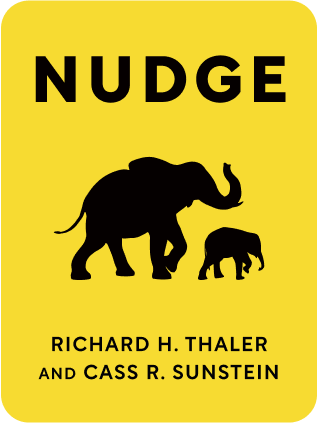

This article is an excerpt from the Shortform summary of "Nudge" by Richard H. Thaler and Cass R. Sunstein. Shortform has the world's best summaries of books you should be reading.
Like this article? Sign up for a free trial here .
What are some nudge policy examples? How do they illustrate what is possible with a nudge?
Nudge policy examples are illustrative of how choice architecture can work in a number of settings. Nudges can work for the environment, education, organ donation, and more.
Keep reading to see nudge policy examples.
Nudge Policy Examples for the Environment
Our environment is under constant threat. 2019 was the second-hottest year on record, coming in close second—by a tenth of a degree Fahrenheit—to 2016. Pollution warms our planet, spoils our drinking water, destroys our soil, and harms our health.
Despite admirable efforts on the part of the international community, global solutions to climate change have been hard to come by. One reason is that most governmental reforms intended to curb climate change are one-size-fits-all, top-down regulations—that is, efficiency standards or mandated reductions in carbon emissions that neglect the foremost principle of libertarian paternalism: choice. When people have no choice, or they lack the tools to satisfy the new rules, they either resist or simply fail. Nudge policy examples work in this type of scenario.
The problem with free choice in the area of pollution, however—especially from the point of view of economists—is that it’s considered an “externality”: a harm that arises from and exists outside of the corrective forces of the market. For example, a natural gas company gets rewarded by consumers for the amount of energy it can produce, even if that production results in polluted air and global warming. In the short run, at least, the market doesn’t punish polluters, and so polluters have no incentive to curb their emissions.
By the same token, because environmental effects are minuscule at the level of the individual and mediated by industry—for example, when we turn up the A/C, we have no conception of the environmental cost of that choice—we don’t receive the proper feedback on our decisions to make a reasoned choice. Nudge policy examples often address feedback or information issues.
Choice in Education
For some, “school choice” is anathema, calling to mind shuttered neighborhood public schools, fly-by-night charter schools, and woefully underserved students. For a libertarian paternalist, however, properly designed and regulated school choice can have significant positive effects on student performance. (In one study, an economist found that when public schools face competition from voucher or charter schools, the public schools produce better results: a 1%–7% improvement in test scores, with the largest gains coming in younger, low-income, or underrepresented-group students.)
As is the case with 401(k)s and health insurance, choosing a child’s school can be a complex and daunting prospect—which is why so many parents simply choose to send their children to the nearest public school. And, as is the case with 401(k)s and health insurance, an appropriate nudge is one that makes choosing easier. Nudge policy examples show how education changes can be made.
An experiment conducted in Charlotte, North Carolina shows how parents’ choices can be improved with more purposeful choice architecture. Normally, Charlotte parents are provided a 100-page booklet with briefs on each of the 190 schools in the district. Although the briefs feature some facts about the school, they omit physical location, test scores, attendance rates, and demographics (these facts are only available online).
When the experiment was run, a random sample of parents were provided highly abbreviated “fact sheets”—with average test scores and acceptance rates—to see how the change in information would affect choice, especially among low-income parents. The experimenters found that low-income parents who received the fact sheets chose schools with 70% higher average test scores than their neighborhood schools; in fact, the school choices these low-income parents made indicated that the weight they placed on school performance had doubled compared to those that received the 100-page booklet. This one of the nudge policy examples shows proof of success.
Examples of Nudge Policy for Organ Donations
Despite the fact that large majorities of Americans support organ transplantation and are willing to be donors when polled, they frequently fail to inform their loved ones of their wishes or to register as organ donors themselves.
Given the dire need of organs—as of January 2006, there were approximately 90,000 Americans on organ waiting lists, many of whom would die still waiting—it’s vital for policymakers to engineer ways to transform Americans’ willingness to be donors into concrete action.
Of course, nudges can help, as seen by these nudge policy examples.

———End of Preview———
Like what you just read? Read the rest of the world's best summary of Richard H. Thaler and Cass R. Sunstein's "Nudge" at Shortform .
Here's what you'll find in our full Nudge summary :
- Why subtle changes, like switching the order of two choices, can dramatically change your response
- How to increase the organ donation rate by over 50% through one simple change
- The best way for society to balance individual freedom with social welfare






